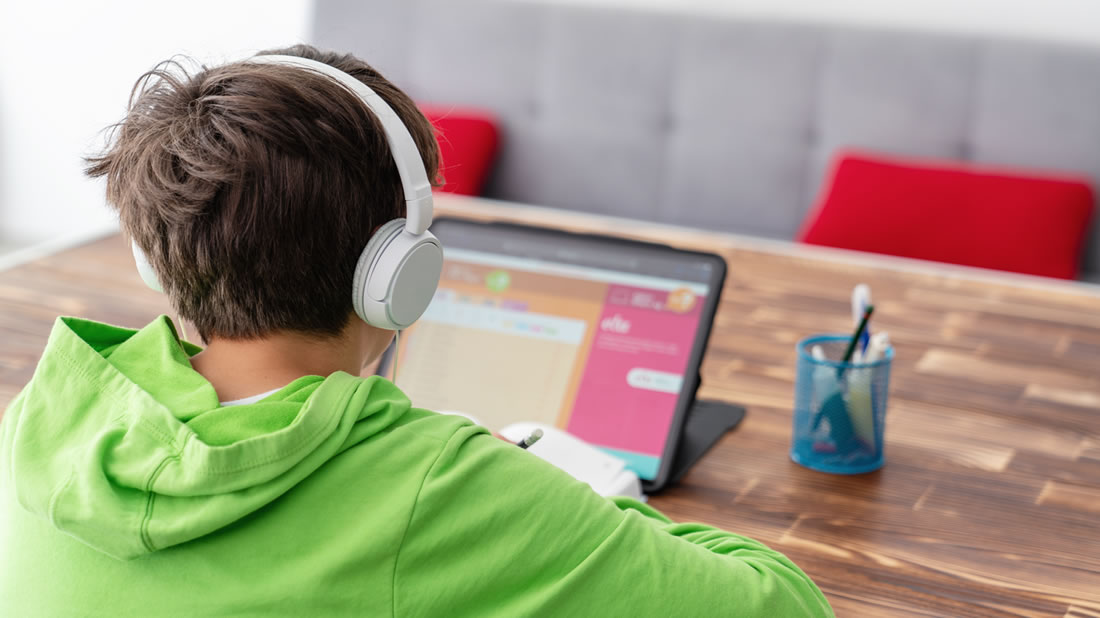
6 tips to strengthen your online learning strategy
A seasoned educator offers advice to help teachers and students adapt to and embrace their new online learning reality
Here are some of her top tips to embrace online learning and make it work best for everyone:
1. Be realistic. Educators should limit their synchronous or “live” sessions per week, and those sessions should be 20-30 minutes to maximize students’ attention span. It’s tough for educators to read the reactions in the room in a digital lecture, so keeping things short helps to make instruction manageable.
“I think the biggest thing I had to prepare my team for,” says Castro, who is the math department chair, “was the realistic factor.” Teachers had to accept the fact that their tried-and-true instructional methods would likely have to change, because, as Castro points out, education now comes second to mental and physical health. “You’ve got to remember what is going on in people’s lives right now. Now you really see that your classroom and the material you’re teaching is really not the most important thing in the world. You have to take those 20 minutes of synchronous meeting time and talk to your kids.”
If you get to teach, great, she adds–but really, helping students find healthy distractions that will keep them from spiraling into negative mindsets, wondering how long lock-downs and isolation will drag on, is most important.
2. Flip the way you taught in-person. Use the “live” time for face-to-face check-ins with students. Record your lectures and keep them short–no longer than 15-20 min–for students to watch when they can, because the same time doesn’t work for everyone anymore.
“I’d make a video of my lesson and at first, you start out and you have a 45-minute video. I realized students weren’t going to watch that. So I’d make my videos shorter, have important points written down in Notability, and I’d tell students when to pause the video and look up those important points,” Castro says.
Breaking lessons into two or three 10-minute videos is popular with her students, too, she notes. Synchronous meetings may begin with students asking questions about material or reviewing certain concepts, but then they turn into an important opportunity for connection.
“I go in with the idea that I’ll cover material and answer questions for 10 or 15 minutes, but I’ve found that my kids want to stay on and talk–it’s not me lecturing, and it’s those moments and that connection [that we all need],” she adds.
3. Don’t micromanage integrity. Set clear parameters for take-home assessments: allow calculators, make sure questions are original and unique, and allow open notes. If you make the assessment original, but not impossible, and give students a way to call out to you and ask questions, you can ensure accountability.
4. Make tech tools optional. Let students use what works for them–computers and tablets, pencil and paper, etc.–be accessible for all learning styles. Castro recommends Notability to her students because it helps her enhance hand-written notes with digital capabilities like audio recordings.
5. Let students know they can ask questions about anything being taught–even if they feel silly. “The worst part for the teacher, in this kind of situation, is that you don’t get to read students’ body language,” Castro says. “When I explain something in the classroom, I look to see if I have deer-in-the-headlights looks, but even if I’ve got students on my meeting grid, I can’t read their body language. I had to tell my students that this will be really weird, and I need them to ask me anything and tell me when they don’t understand, because I won’t be able to read them. I feel like I’ve lost one of my senses.”
6. Don’t throw new tools at teachers and students, but do take advantage of tech as you plan for the future. In the beginning, getting used to such a sudden move to online learning was about as much as everyone could handle. But if and when a viral outbreak necessitates another move to at-home learning, advance planning will help everyone feel more prepared and capable.
“We had an academic council meeting and immediately said this is not the time to implement something new,” Castro said of the days immediately following the transition to online learning. “But schools are going to have to plan–I know we’re going ot have a plan in place in case this happens again. I use Google Meet, Google Classroom, and Notability as the means for my students to access everything. I keep my meeting schedule structured, because as structured as you can have it, the better for students.”
- Cybersecurity staffing shortage is districts’ top concern - April 1, 2024
- How schools can help students overcome the digital divide - March 1, 2024
- How to work for equity of access in classrooms - March 1, 2024